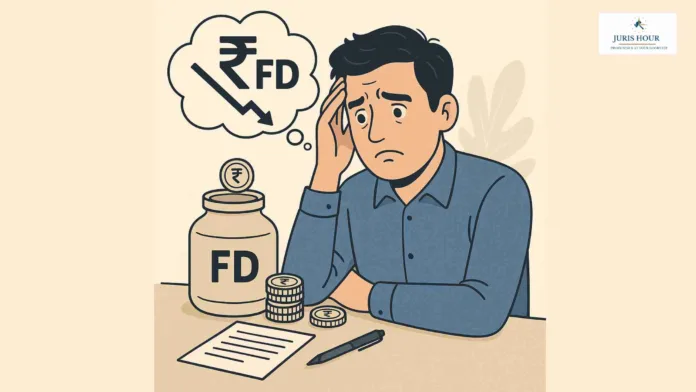In a significant move to stimulate economic growth, the Reserve Bank of India (RBI) has announced a 50 basis points (bps) cut in the repo rate, bringing it down to 5.5%. This marks the third consecutive rate reduction in 2025, signaling a shift in the central bank’s monetary policy stance from ‘accommodative’ to ‘neutral’.
The decision comes in response to inflation remaining below the RBI’s median target of 4%, aiming to encourage borrowing and investment amid global economic uncertainties . Additionally, the RBI has announced a phased reduction of the Cash Reserve Ratio (CRR) by 100 bps in four tranches, starting in September, to enhance liquidity in the banking system.
Implications for Fixed Deposit Investors
While the rate cut is expected to benefit borrowers through lower loan interest rates, it poses challenges for fixed deposit (FD) investors. Banks have already begun adjusting their FD interest rates downward in response to the RBI’s monetary easing. For instance, HDFC Bank has reduced its FD interest rates by 50 bps following the previous repo rate cut.
According to a report by SBI Research, FD rates have been reduced in the range of 30-70 bps since February 2025 . This trend is expected to continue, making it crucial for FD investors to reassess their investment strategies.
Strategies for FD Investors
Financial experts suggest several approaches for FD investors to navigate the declining interest rate environment:
- Lock in Current Rates: Investors are advised to secure existing higher interest rates by booking FDs now, especially for medium to long-term tenures. This strategy can help maintain better yields before further rate reductions take effect.
- FD Laddering: Implementing a laddering strategy—splitting investments into multiple FDs with varying maturities—can mitigate the impact of rate declines and maintain liquidity. This approach allows investors to reinvest maturing FDs at prevailing rates, balancing returns and accessibility.
- Explore Alternative Investments: With FD returns decreasing, investors might consider diversifying into debt mutual funds, corporate bonds, or equity-linked savings schemes (ELSS), depending on their risk appetite. These alternatives may offer relatively better accruals in a falling interest rate scenario.
- Review Existing FDs: Checking if current FDs allow premature withdrawals could be beneficial. If the penalty is low, reinvesting in higher-yielding instruments might be an option.
Market Response
The RBI’s rate cut has positively impacted the stock market, with the Sensex surging by 600 points and the Nifty rising above the 24,950 mark. Rate-sensitive sectors such as banking, financials, and automobiles led the market rally, reflecting investor optimism following the central bank’s decision.
Conclusion
The RBI’s proactive measures aim to bolster economic growth amid global uncertainties. However, fixed deposit investors must adapt to the changing interest rate landscape by implementing strategic investment approaches to safeguard and optimize their returns.

